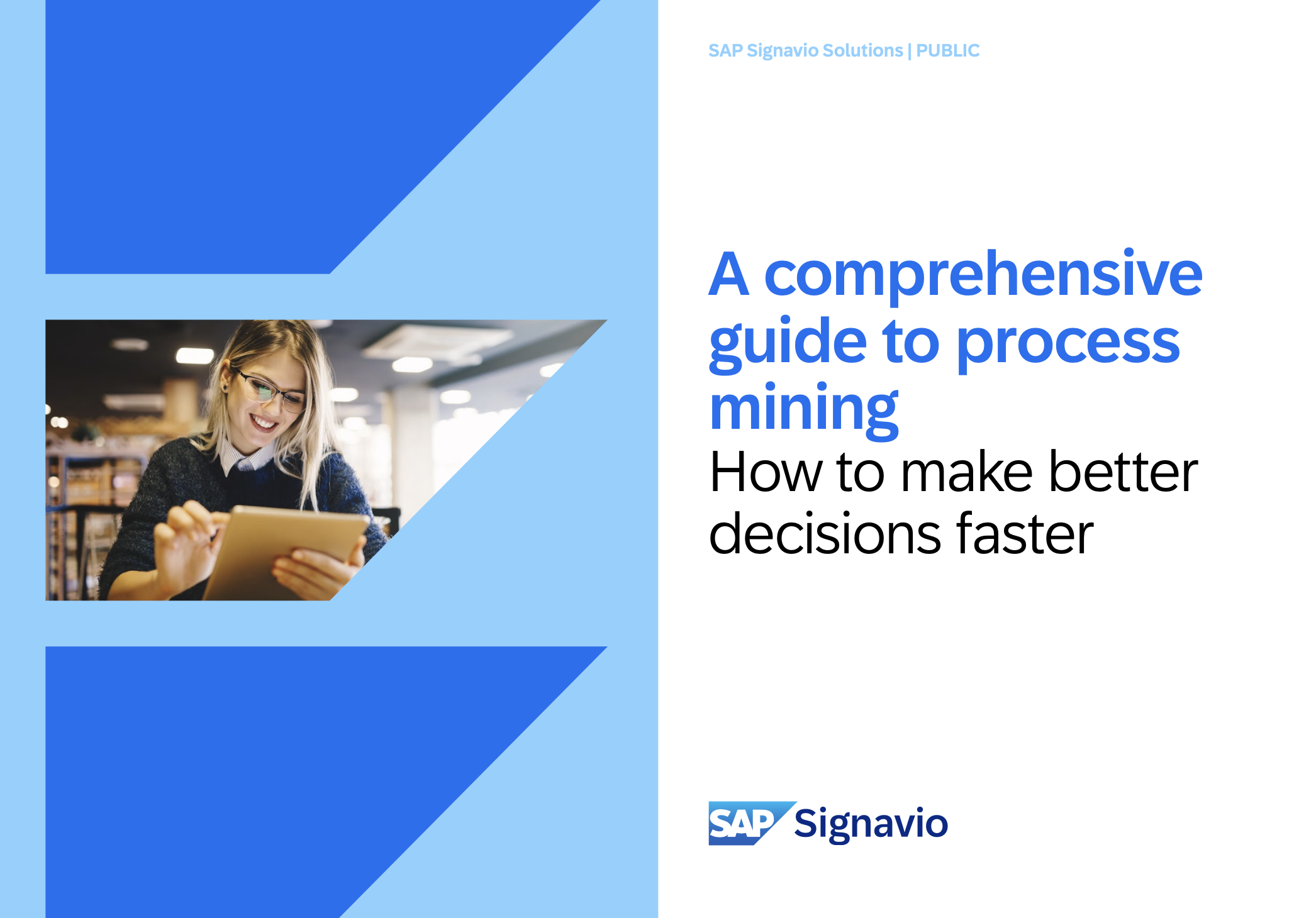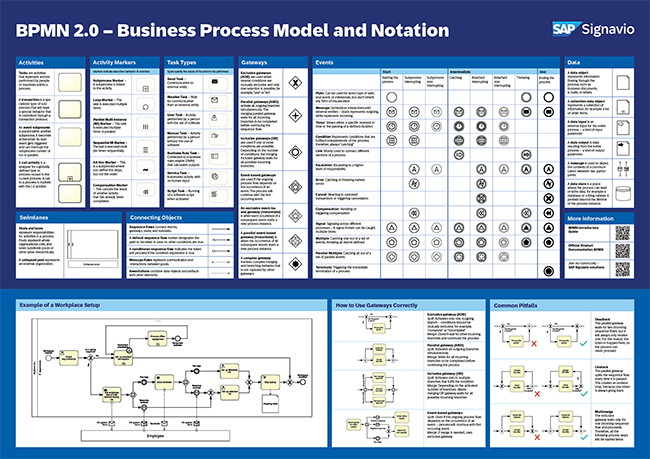Why Process Mining Matters?
Process mining reveals how work really happens by analyzing system data. Beyond efficiency and compliance, it explains why companies need it to succeed in digital transformation—explore below to see its full benefits.

Process mining reveals how work really happens by analyzing system data. Beyond efficiency and compliance, it explains why companies need it to succeed in digital transformation—explore below to see its full benefits.
Organizations design processes with the expectation that work flows smoothly from start to finish. In reality, everyday execution often looks very different: manual steps, exceptions, and system gaps can slow things down or create compliance risks.
Process mining addresses this gap. By analyzing digital traces left in ERP, CRM, or workflow systems, it reconstructs how processes actually run. This makes it one of the most effective ways to perform process discovery and build a fact-based foundation for improvement.
Companies adopt process mining not just to understand the “as-is” state, but to answer bigger questions: where are we losing time, why do errors occur, and how can we adapt faster to change?
These insights explain why process mining is important—because without them, digital transformation, compliance, and efficiency efforts risk being built on assumptions.
→ Related: What is Business Process Management?
Most organizations already track KPIs and performance metrics, but these numbers rarely explain why processes perform the way they do. That’s where process mining adds value. It moves beyond surface-level reporting to show the exact paths work takes, how often exceptions occur, and where time or resources are lost.
This transparency matters because business processes are often more complex than leaders realize. Different departments may follow different variations of the same workflow, or manual workarounds may silently grow over time. Without visibility, teams risk making decisions on assumptions rather than evidence.
By turning system data into objective insights, process mining software creates a shared reality across business and IT. It ensures that efficiency programs, compliance initiatives, or transformation projects are based on facts—not opinions.
This explains why process mining is important: it closes the gap between how processes are designed and how they actually run.
For companies in regulated industries, this clarity directly supports operational resilience, while in financial services it strengthens compliance and audit readiness.
The value of process mining goes beyond efficiency gains. It provides a foundation for solving specific business challenges that organizations face in their day-to-day operations and long-term transformation programs.
In accounts payable, process mining can reveal where invoices are delayed or approvals are skipped. For order-to-cash, it can highlight how often credit checks are bypassed or orders require manual correction. These insights directly support faster cycles, fewer errors, and stronger compliance.
Process mining exposes bottlenecks in procure-to-pay, such as stalled purchase orders or contract non-compliance. In supply chain flows, it can detect recurring delays caused by manual data entry or missing documentation, enabling teams to reduce stockouts and improve on-time delivery.
Customer-facing processes like service activation or complaint handling often involve multiple handoffs. Process mining shows where cases get stuck, where unnecessary rework happens, and where service teams lose time on manual steps. The result is faster resolution, lower churn, and higher satisfaction.
Large-scale initiatives like ERP transformation, automation programs, or compliance projects depend on reliable process data. Process mining provides the evidence base: which processes should be automated, which need redesign before scaling, and where risks could undermine transformation goals.
In uncertain environments, resilience is just as important as efficiency. By monitoring processes continuously, companies can adapt to market shifts, new regulations, or crises. This makes process mining not just a tool for cost reduction, but a long-term enabler of adaptability and competitive advantage.
Process mining is most useful when organizations need clarity about how work is actually performed. Typical scenarios include:
In short, process mining should be used whenever decisions about change, investment, or compliance require evidence rather than assumption.
→ Related: Process Mining 2.0 - Generative AI
Process mining is more than a tool for incremental improvements—it is a foundation for transformation at scale. Business transformation initiatives such as ERP migrations, automation programs, or compliance-driven change often struggle because they are built on assumptions about how processes run.
When undocumented workarounds or hidden variations are carried into new systems, transformation fails to deliver its full value.
By reconstructing the “as-is” state from real system data, process mining ensures transformation starts from reality, not guesswork. It shows where processes need harmonization before an ERP migration, which workflows are stable enough for automation, and where compliance gaps could undermine resilience.
In practice, process mining strengthens transformation by:
This is why process mining is essential for digital transformation as well as broader business transformation: it doesn’t just highlight inefficiencies, it gives leaders the evidence they need to design change that sticks, scale automation with confidence, and monitor performance long after go-live.
One of the biggest reasons companies adopt process mining is that it helps turn process improvement from a one-time project into an ongoing capability.
Traditional improvement efforts often stop after a redesign or a system upgrade, leaving teams without visibility into whether changes were adopted or if performance is slipping again.
Process mining closes this gap by continuously monitoring execution. By comparing “before and after” process data, it shows whether improvements have delivered the expected results and where new bottlenecks may be emerging. This makes it a natural fit within the BPM lifecycle, where optimization is not a final step but a repeating cycle.
In practice, process mining enables continuous improvement by:
For many organizations, this means shifting from occasional workshops and audits to a culture of continuous measurement. Instead of waiting months to discover problems, leaders can see trends in near real time and adjust processes proactively.
The result is a more resilient organization—one that adapts quickly to new regulations, technologies, or customer expectations.
Every process has an impact on customers—whether it’s an order-to-cash workflow, a service activation, or a complaint resolution. Delays, rework, or missed handoffs directly translate into longer waiting times and lower satisfaction.
Process mining reveals where customer-facing processes break down. It highlights which steps cause delays, where repeated handoffs slow response times, or where errors force customers to resubmit requests. By fixing these issues, organizations can reduce churn, improve response times, and deliver smoother experiences.
This customer perspective is one reason why process mining is important: it connects operational efficiency directly to outcomes customers feel every day.

While process mining offers clear benefits, adopting it isn’t without challenges. Success depends on recognizing potential hurdles early and addressing them with the right strategy.
These considerations don’t reduce the value of process mining—but they highlight why it should be seen as part of a broader capability. When combined with governance, stakeholder involvement, and continuous monitoring, process mining becomes a sustainable enabler of business transformation.
Process mining matters because it turns hidden process data into actionable insights. It explains not only what is happening in your workflows, but why it happens—and what to do about it. The result is greater efficiency, stronger compliance, better customer and employee experiences, and a solid foundation for digital transformation.
For organizations aiming to compete and adapt in fast-changing markets, process mining is no longer optional. It has become a core capability within process discovery and the broader BPM lifecycle, enabling continuous improvement and resilience.
Get the most important standards, ready for you to modify and adapt according to your own standards and organizational needs.

